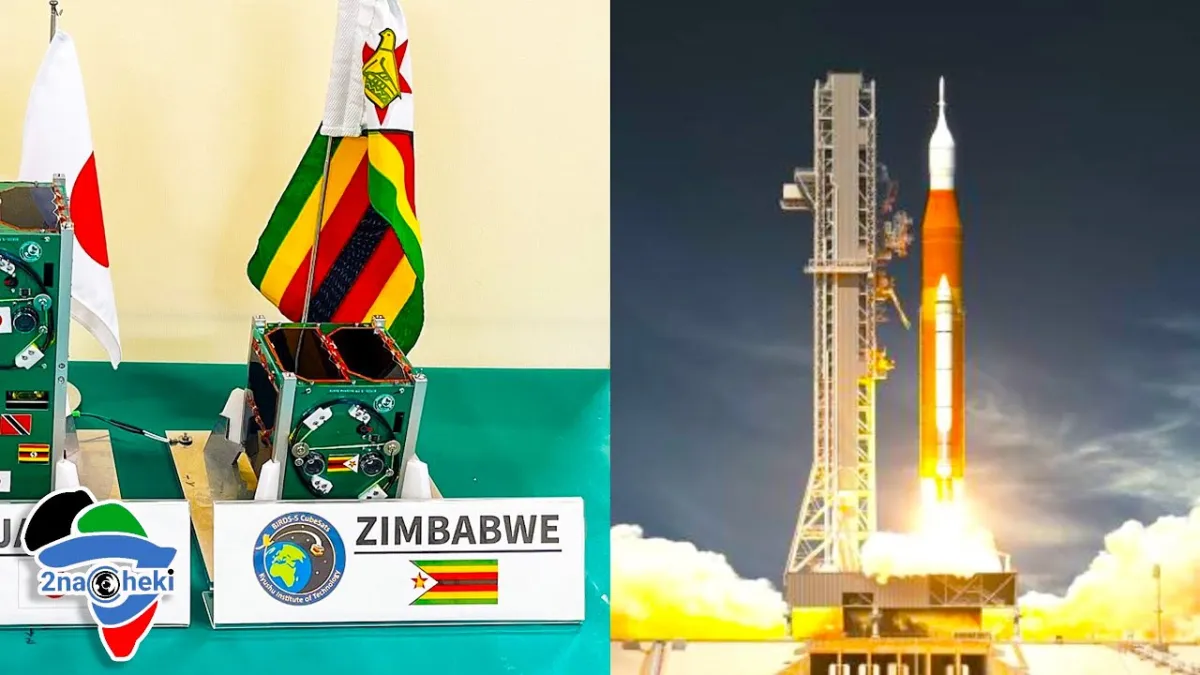It’s 7 November 2022, and ZimSat-1 is ready to be shipped into orbit. Zimbabwe’s 1st orbiting satellite carrying the promise of gathering data on land use and cover, soil fertility, and water quality assessment. The nation’s first jab at space stuff.
A little over a year later, it is alleged that the satellite’s orbit decayed (weakened, slowed down) and fell back towards Earth, translating to vaporizing by the atmosphere upon re-entry on the 16th of May 2023.
(News from February 2023 about high rotation rates and slowing down. Two news about transmitting data from June 2023, 120 packets per pass, but spacecraft had decayed by then. No reception reports found on SatNOGS or Twitter.)
Nanosats Database
Did we manage to get anything from the CubeSat?
The timelines for what happened when are quite jumbled up but this is the timeline of what went down with ZimSat-1.
7 November 2022: ZimSat-1 is launched into space and handed over to the ISS (International Space Station)
2 December 2022: ZimSat-1 is deployed from the ISS into orbit
19 February 2023: ZimSat-1 undergoing orbital stabilization and to begin transmitting data the following month.
4 July 2023: ZimSat-1 is now receiving data and sending images of specific areas around Zimbabwe
According to Mr. Painos Gweme, Zimbabwe National Geospatial, and Space Agency (ZINGSA) coordinator, the satellite began transmitting data on the 4th of June 2023 and was responding well to both uplink and downlink requests. With each pass over Zimbabwe, they received 120 segments of information that were reconstructed into a complete image.
The images are very useful and can be used for various applications, which include change detection of an area over time, crop health assessment, environmental monitoring (veld fire assessments, as well as deforestation and land degradation assessment),
Painos Gweme – ZINGSA coordinator
Where the timelines start to not add up is where the Nanosats Database notes the satellite falling out of orbit in May 2023. They further go on to highlight that the timing of some news is a bit late acknowledging that the timelines are not tallying. However, this does not change the reality that ZimSat-1 is allegedly out of commission.
Zimbabwe was not the only country that sent a CubeSat into space. Uganda was part of the payload with their PearlAfricaSat-1. According to the Nanosats Database, their satellite may have faced an even more tragic demise. This satellite also fell back into the earth’s atmosphere in May 2023, specifically on the 16th.
But where ZimSat-1 was actually able to receive and transmit data as well as take a couple of pics of our teapot-shaped country, PearlAfricaSat-1 was not able to transmit anything since its deployment from the ISS.
Reentry 2023-05-16. No signal? (Unable to find confirmed successful signal reception reports as of 2022-12-20)
Nanosats Database
ZimSat-1 is actually a big win for Zim
Of course, a number of you are going to be criticizing this project and mentioning how the funds allocated to this project could be used elsewhere for more pressing issues. Those people would be partly right.
However, I believe it was a good project to work on for these reasons.
It showed that it is possible to get a satellite into space even if you do not have a fully-fledged space agency with the capacity to send stuff into orbit.
It demonstrated, on the 1st attempt that Zimbabwe has the capacity to establish communication with an orbiting satellite that it co-developed…(even though most of it was designed by Japan)…and also that we are able to receive data from that said orbiting satellite. Data that we otherwise could not have been able to obtain without such a project.
This project for me gave me the memories of my high school years. Being a science nerd since I was barely able to write, I naturally was part of the science club and when I was in A level, I was fortunate enough to be at a high school where there was an observatory. I and my fellow science club nerds tried working towards reviving this observatory. We failed to do so because of a massive lack of time, funds, and the necessary talent, and it was a big task for a couple of teenage boys and their physics teacher to tackle, but we tried and learned a lot in the process.
That for me is the story of the ZimSat-1 projects, only that in this project, they actually did it, and it worked on the first try. And that is a story that science nerds like me, young and old, in this little piece of rock we call Zimbabwe will look at and think wow. I want to do that too, but bigger.-techzim

